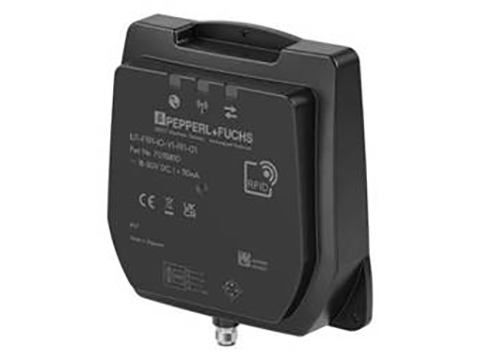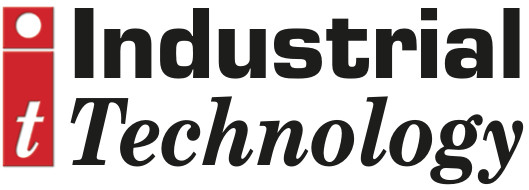
Posted to News on 5th Nov 2024, 15:30
Precise distance measurement up to 60 m in particularly confined spaces
Quick and precise distance measurements are essential for a high degree of automation in dynamic applications with self-driving systems. However, the vehicles often offer little space for the required sensor technology. For this situation, Pepperl+Fuchs offers a series of devices that are hardly larger than a matchbox.

The photoelectric distance sensors in the R200 series with Pulse Ranging Technology (PRT) are easy to integrate, even in very confined spaces. With 250,000 laser pulses per second, the sensors measure with maximum precision at a distance of up to 60 metres, and their IO-Link interface enables a very simple communication connection.
In addition to automated storage and retrieval systems, increasingly compact storage vehicles are taking over automatic operation in modern rack warehouses. In larger plants, many of these shuttles can be on the move at the same time. The shuttles must ensure that the goods are transported safely and accurately, while identifying free compartments and, of course, preventing any collisions. The physical properties of the Pulse Ranging Technology time-of-flight scanning method optimized by Pepperl+Fuchs make the sensors in the R200 series ideally suited for such tasks.
As with any time-of-flight scanning method, PRT determines the distance by measuring the time it takes for a light pulse to be reflected from its target point. Since this naturally happens at the speed of light, the current signal is available in real time without any noticeable delay. To make this signal highly stable and reliable, the new PRT devices from Pepperl+Fuchs emit very short, strong pulses at a high frequency of 250,000/s.
The sensors in the R200 series benefit from the significant increase in performance and simultaneous miniaturisation that has been achieved in lasers and receiver elements in recent years. The considerably higher beam power of the current laser diodes allows significantly increased detection ranges, while the components have become smaller and more rugged. The photoreceivers of the receiver elements are now much more sensitive than in the past and work with correspondingly higher resolution. When using intelligent algorithms, this allows a greatly improved distinction between the signal and noise.
Compared to most conventional sensors, which are used in large numbers today, Pepperl+Fuchs says the R200 devices are 50 to 70 percent smaller; furthermore, triangulation sensors require several times the installation space for the same detection range. At the same time, the PRT sensors achieve significantly better results than the widely used device types in terms of performance values such as detection range, accuracy, and repeat accuracy.
The energy density of their pulses exceeds that of continuous light by a factor of up to 1000. Therefore, signalling is not affected, even by strong ambient light and dark, poorly reflective targets. There is no difference in measured values resulting from the colour of the target object, so that any packaging and storage elements are detected without any distinction. In addition, the sensor can clearly distinguish the reflected light pulses even in very unfavourable conditions with interfering factors such as reflections and scattered light. In contrast to triangulation sensors, the measuring range of the PRT devices is not limited by the geometric arrangement of the lens. Therefore, the devices in the R200 series can measure large distances despite their compact design.
With this technology, they achieve a detection range of 10 m when measuring directly on white objects, and can even achieve a range of up to 60 m with reflectors. At the same time, they measure from a distance of 30 mm even in the narrow near range. The measurement is carried out at high speed, with a high level of accuracy, achieving a very high signal-to-noise ratio. The repeat accuracy is better than 3 mm. Owing to a temperature range of -30 degC to +60 degC, the sensors can also be used in deep-freeze storage facilities.
Standardised device concept
The sensor is encapsulated in an extremely compact housing measuring 15 x 41.7 x 50.6 mm. Due to this design, the sensor can be easily integrated, even in confined spaces. The space saved can be used, for example, for larger rechargeable batteries, enabling a longer operating time without charging and therefore resulting in a measurable contribution to plant efficiency. A swivelling M12 connection plug provides additional flexibility during installation. In addition, there are device versions with cable and pigtail.
If different optical sensors with different measurement procedures are required in an application, the standardised housing offers another advantage: It follows a consistent design principle with a uniform operating and display concept, which applies to the R10x and R20x series from Pepperl+Fuchs. These device families include numerous different photoelectric sensors such as diffuse mode sensors, thru-beam and retroreflective sensors, and measuring sensors with multiple switch points.
When multiple devices are combined, the integration effort is kept to a minimum. This is due in part to the standardised IO-Link interface in the latest version 1.1.3, including the Smart Sensor Profile. The interface offers the option of integrating the R200 sensor into an Industry 4.0 environment. Versions with an analogue switching signal (0 mA 20 mA, 4 mA 20 mA or 0 V 10 V) are also available.






